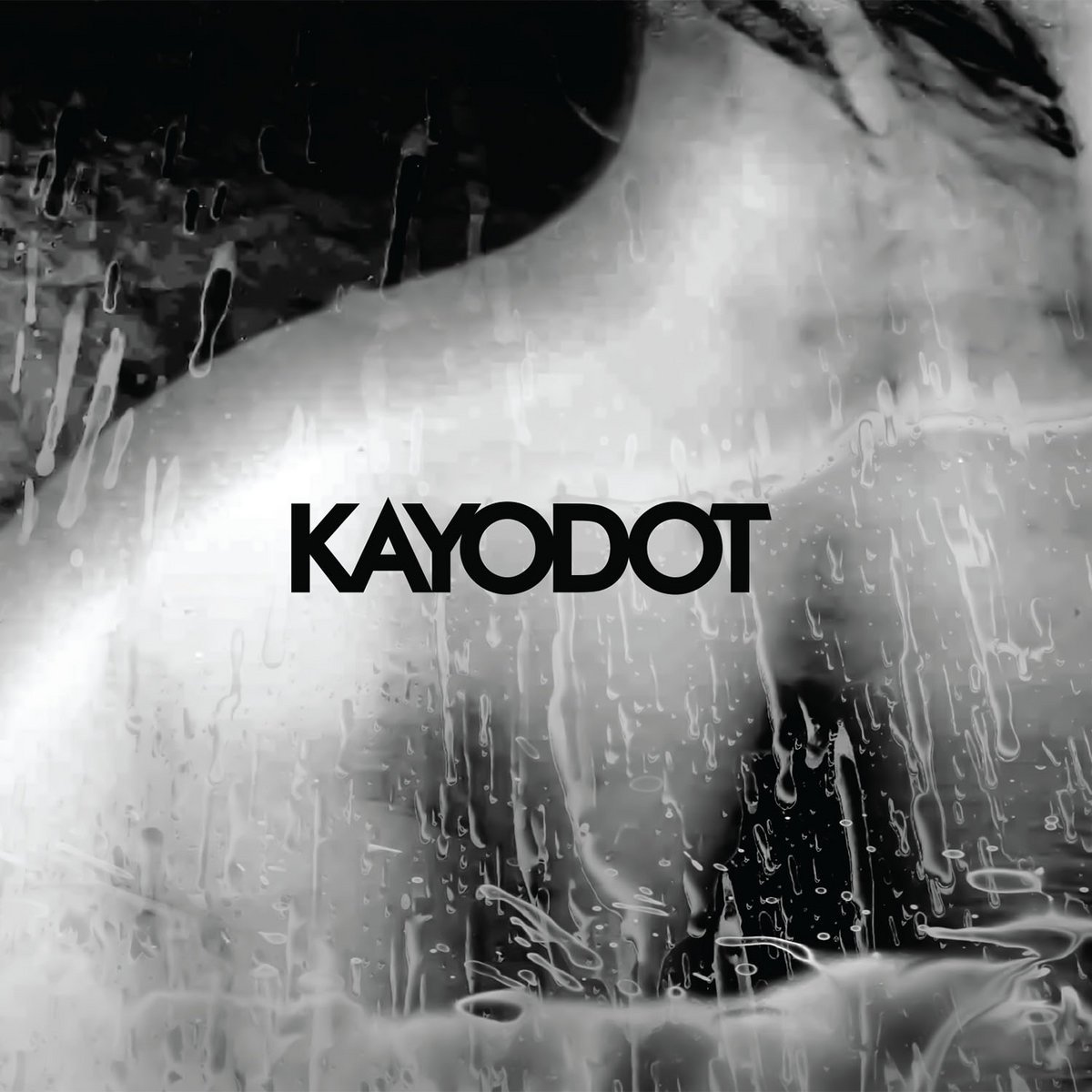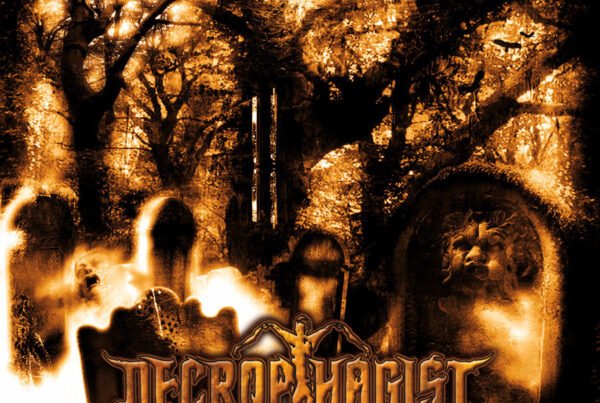I’m finding it hard to find things to say about Kayo Dot without repeating what countless other voices have said since their formation in 2003, or without taking away from what is to follow over the course of this article. Indeed, this is a band that has shaped the metal scene’s avant-garde like few others in the past two decades; their sixth album Hubardo, released in 2013, stands out even among their relentlessly ambitious and imaginative catalogue as a true statement of intent, purpose, and ability. In hopes of doing justice to this massive release, I’ve assembled a team consisting of Everything Is Noise staffers Robert, Eeli, and Hanna – their takes on Hubardo and its achievements can be found below.
Robert Miklos
I’ll start by going back in time about seven and a half years. In early 2013, I caught wind of some news that Kayo Dot was going to release a 100-minute double album to celebrate the band’s ten-year anniversary. There were talks of the record going towards a more metallic direction akin to early maudlin of the Well, and that’s right about when my hype meter broke and went off the charts; in the ensuing moments, I could barely contain myself.
Let me back up a little here. I got into Toby Driver’s bands sometime five years prior to that, and ever since then I have been entirely sold on almost everything his projects put out. Gamma Knife and Stained Glass, in spite of what and how they are, didn’t do much for me compared to other releases, so naturally, after such a long time, when I heard of Hubardo I nearly imploded with excitement.
I remember reading this description: ‘Hubardo (meaning “lantern” in enochian) is the seventh studio album by veteran avant-metal maestros, Kayo Dot. Produced by Randall Dunn and with a running time of almost 100 minutes, the music follows an epic and heartbreaking narrative of a meteor falling to Earth and its enchantment and alchemical transformation of a lonely poet.‘ I was never so psyched about any artistic thing up to that point in my life.
The album came out on the last day of August. I recall bolting out from work towards home to get to it as fast as possible. What I’ll never forget (among other things) is the first listen. I maybe made it half-way through the album before hitting ‘stop’. My brain was twisted into a labyrinthine mound of chaos, and it was telling me to stop assaulting myself; however, my heart was simply drinking away the play button with its eyes. I pushed through with difficulty. At the time, this was the most out-there thing in my playlist.
I felt exhausted after my first listen, and I could barely wait to make it through the next several dozen until I could really taste all the flavors as they are. I think it took roughly a year until I could process the record properly. Definitely not easy listen! Even today I revisit the album, and while I can go through it with a relative ease, it’s very demanding – and I love it.
The album had a special edition release on vinyl that came with a short story/poem that was written by none other than Jason Byron. For those of you who aren’t familiar, he is a long-time collaborator of Driver’s, building the lyrical end of a lot of his works. He also provided a guest vocal performance on the first track of Hubardo for the first time since his days as a vocalist on the early maudlin of the Well albums.
About three years ago I went ahead and got a copy of said short story/poem. It’s called The Sword of Satan, and across its twenty-six pages it’s just as mystifying and baffling as its sonic counterpart upon the first encounter, so to say. I’m still not sure what I could extract, or what I have understood from it; however, it’s a fitting addendum to the lyrical content of the album.
The most immediately noticeable trait of the album is its stylistic versatility. It manages to encompass a huge variety within, from a few strains of metal, through chamber, choir, and classical to electronic and ambient. Of course, it wouldn’t do justice to simply say it is an amalgamation of each respective stylistic sub-genre that can be found. Each influence and element is carefully and seamlessly melded with the others into a monolithic monument that is unbelievably greater than the sum of its parts.
This isn’t variety for the sake of not being monotonous, mind you. There is a clear vision behind this album, and the way one can experience it is probably the only way it can be brought into being. Along every step of this journey we are accompanied by Driver’s trademark style of composition. This consists of something that really needs a word for it, but I haven’t found anything appropriate – yet. The music permeates through every little crack with an eerie, unsettling, surreal, and otherworldly vibe, which, in a twisted way, is soothing. There’s something oddly relatable about how unrelatable that feeling is. This complex emotive blend is also achieved with a highly specific choice of instrument tones and quite a large variety of instruments. As such, we can see things fleshed out in ways that maybe one would’ve never imagined.
I would be remiss if I wouldn’t add to this the highly meticulous nature of the music, both in detail and in reference to through-composed music. There is little to no repetition of any kind across the board, which, when layered on top of the respective tunes, offers truly a unique experience. Also, it literally forces the listener to go through the record several times to catch everything.
This lack of repeating patterns in the music, much like most of Driver’s works, gives a sensation of it being improvised and it also gives off the feeling that it borrows from jazz. Driver has since declared that all the music is thoroughly rehearsed beforehand, and that there are no jazz influences present anywhere in his music.
Hubardo required a small army of people to bring it to life; their virtuous display of craft can be felt all across. This only further adds to what this massive work already is from basically every point of view. It’s truly a balls-to-the-wall maximalist record that simply cannot conceive of compromise or anything even remotely similar.
Naturally, with it packing so much depth and power, to even begin delving into its innards would require some form of academic essay. It took me years to dissect the contents of the music, my reactions, and thoughts in my own internal language, so as to feel that I arrived at some form of encompassing it with my mind. My heart on the other hand had no issues; it was one with the album from the beginning, and probably will be as long as I live.
There are very few albums about which I would say that they’re one of the greatest of all time, but to me at least, this is one of them. This is a type of statement I normally refrain from, yet when thinking of Hubardo, I utter it with an unnatural conviction. Its beauty is timeless, like the beauty of nature, and the same goes for its intricacies.
I have to stop somewhere, because I could go on forever about this album. So I’ll just leave here my favorite part from it. It’s from my favorite song, “And He Built Him A Boat”. The last minute of it when the last three verses are uttered, which go like this:
‘The poet amidst the musical waters
Became the song and what he had
Dreamt of being all along‘
Hanna Ott
In the summer of 2014, quite possibly thanks to the recent release of Kayo Dot’s mesmerising Coffins on Io, my then-boyfriend and I became enamoured with the idea of starting an avant-garde metal project together. Inspired in more or less equal parts by maudlin of the Well, Sleepytime Gorilla Museum, Ocrilim’s ANNWN, and Kayo Dot, we picked a name, decided on an aesthetic, and jammed some ideas, usually with him playing weird chords on the guitar and me self-consciously improvising melodies on various woodwind instruments. We were young, unashamedly pretentious, and had no idea what we were doing. The relationship ended, and it took the band with it, fortunately before we got a chance to subject an actual audience to our music. Perhaps out of embarrassment at the musical abomination we very nearly released into the already oversaturated wilderness of bullshit avant-garde projects, or out of the desire to put as much space as possible between myself and memories of my ex, I turned my back on all the bands that influenced us for a long time.
With all of that in mind, I have a confession to make: until I signed up to write this article, I had never actually heard Hubardo, the monumental concept double album that seems widely regarded as a milestone in Kayo Dot’s discography. I was familiar with Choirs of the Eye, Coffins on Io, even the lesser-acclaimed but equally gorgeous Blue Lambency Downward – but Hubardo somehow slipped through my fingers. Which brings me to my second confession: I was genuinely afraid to be disappointed by Hubardo. I’ve heard this album praised by many people I respect (and some I don’t), and I’d inadvertently formed an opinion on it. Surely it couldn’t actually be as good as everyone said; surely at least some of these people were only praising it so highly and loudly so that they’d appear to ‘get it’, and to fit in. So I took this chance to familiarise myself with it, and to see what the hype was about.
This is my first contribution to A Scene In Retrospect. I know it’s supposed to be for albums we have some kind of connection to, or at least know. Listening to and writing about an album that’s already considered a classic, or influential, or groundbreaking, without ever having heard it – I’m going to be honest, it’s kind of scary. What if I didn’t understand the album, or what if I just straight up didn’t like it? As it turns out, I needn’t have worried. Hubardo hasn’t blown my mind, but it is bloody good. Something about it feels familiar, but also mystical; it’s a world of its own in the way only Toby Driver can create it. From its borderline threatening opener “The Black Stone”, through the eerily catchy “Thief”, the driving “Floodgate”, and finally, the ambitious yet somehow understated closing track “The Wait of the World”, one thing ties it together: it’s ravishing.
There’s something so restless about Hubardo, fiery, anxious. I didn’t last more than ten minutes when I sat down to listen to it for the first time – I had to move. So I went for what’s probably one of the most enjoyable walks of my life, through the local park, a half-moon in the sky. I’ve walked the same track a hundred times, it was my default when I wasn’t working over lockdown, and I walk it any time I just need to be by myself, but with Hubardo’s glassy reverb-drenched vocals, sporadic jazz sections, and occasional claustrophobic metal-gone-haywire vibes as a soundtrack, it took on a new form.
Despite its restlessness, the album feels so natural. Each track became comfortable and welcoming as soon as I let it just be what it was, without trying to convince myself it was one thing or another, without putting it into a box. A special mention here to “And He Built Him A Boat” – this was a song heard at the right time in the right place, and everything about it is just gorgeous. I’m a huge sucker for black metal lead lines, vocal harmonies, glacial reverbs, and simple, poetic lyrics, and this track has it all. Tell me the description of ‘velvet waters’ tumbling doesn’t make you feel all sort of things; that shit is beautiful.
Having listened to the album a few times now, I can safely say it’s growing on me, a lot faster than I anticipated. There are some tracks I like more than others, specifically the final three – I genuinely don’t think I can fault these, neither in their own arrangement and musicality, nor their placement and purpose within the album. Hubardo definitely takes me back to being a pretentious teenager again, without the weird superiority complex I adopted in my immaturity. Maybe I needed to hear it now, or perhaps I would have loved it all the same in my younger days, but one thing is for sure: this article would be completely different had I heard it back then. It’s an intricate and fascinating album; Hubardo will definitely stay on my radar.
Eeli Helin
Kayo Dot, where to begin? Formed by its primus motor Toby Driver shortly after disbanding maudlin of the Well, Kayo Dot is the very definition of what it means to be a musical chameleon. Highly characteristic and avant-garde by nature, the group notable for its revolving door policy has incorporated different aesthetics and instrumentation on nearly every release, melting together black metal and classical, progressive rock and post-metal, chamber music and noise, and the list goes on. Hence, the ‘avant-garde’ moniker is an easement to the rampant string of terms. Generally speaking, I think that whenever approaching anything Driver has laid his hands on, you better not have any kind of reservations going in.
Hubardo came out in 2013, and was actually my primary contact with the group. The triple LP was a massive endeavour to digest – let alone understand – but worth every hour spent with it. Featuring a plethora of collaborators and having a stronger metal-esque touch than before, Hubardo is a standout effort to me, in all possible senses. It distances itself and rises above the vast majority of other acts in that loosely defined genre, and is my personal favourite out of everything that Driver has penned so far. The album is a vibrant cavalcade of emotions that never seems to run dry of new aspects and discoveries within it, no matter how many times you listen to it.
To pick apart some of the brilliancy found here, take the tracks “Thief”, “Zlida Caosgi”, and the closing pair of “Passing the River” and “The Wait of the World” into scrutiny. Those songs alone make up a standard full-length’s worth of material, each being completely different sonically yet having a unitive backbone, being tied together seamlessly in some weird way I can’t really decipher to layman’s terms. The clash of abrasive and fuzzy black metal and downright savage classical instrumentation at times spells out the word ‘jazz’ to one’s mind, even though Driver has publicly denied the existence of such a thing in their output on multiple occasions. Still, the unusual and rather unique combo encases such intricasies and depths that in my opinion, the listener’s entitled to any kind of interpretation in the end.
The album is an epitome of its own kind and an important part of history, especially on the niche end of things. The immersive atmosphere, wild orchestrations, and the structurally out-of-the-box progressions need to be heard to even get the slightest sense of what’s going on, as the flawless production and the abundance of sprawling styles come together ever so elegantly, and there’s very few other artists coming even near to what Hubardo has to offer as a whole.
What are your thoughts on/experiences with Hubardo? Are you a fan of Kayo Dot, and if so, what’s your favorite album of theirs? Do you have any records you’d like to recommend for inclusion in A Scene In Retrospect? Leave it all in the comments if you feel like sharing!






